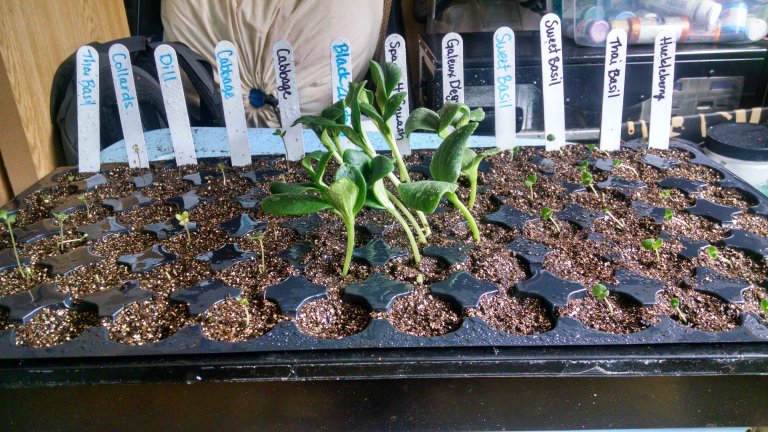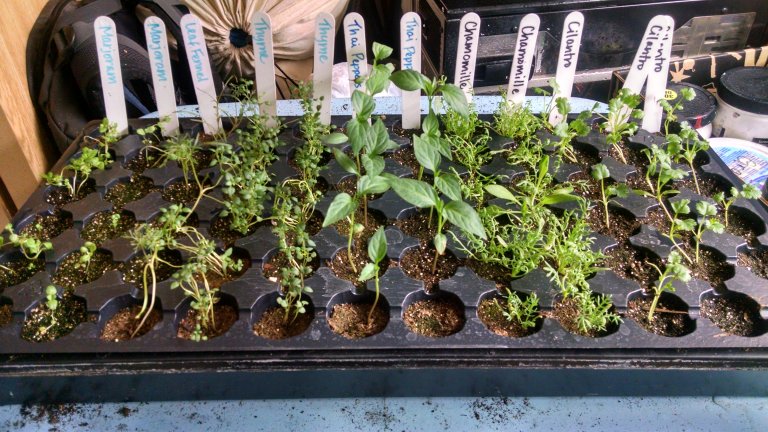Things are really starting to come together for our garden here this year. Just a month ago, we really had no idea where we were going to be gardening, yet we’ve got over 400 garden starts in progress! With one month until last frost here in Fairbanks, we’re starting to have a lot more clarity about our garden plan here in Fairbanks, Alaska! We’re planning on planting come June 1 and have kicked off a plan to start hardening off our starts here over the month of May.
First, we were able to secure two raised bed plots at the University of Alaska Fairbanks Community Garden. We’ll be running plots 57 and 58! We decided to go after these for a few reasons. The raised beds they provide are highly beneficial for cold climate gardening, they are close to the campus where I work and we were also interested in being able to secure these not just this year, but also in future years. (Plot users are relatively guaranteed first pick for subsequent years.) The UAF gardens are also wholly organic, which we really prefer, and we practice organic gardening methods in every possible way we can. Their beds are a reasonably spacious 12 foot by 4 foot each, offering us just shy of 100 square feet of community gardening space.
Here’s the plan for the hot house:
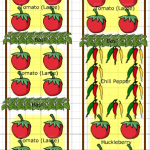
We struggled to figure out how this second plot was going to fit into our overall garden plan, but it turned out to work perfectly. We will be using our two raised beds for tomatoes, basil and Thai hot peppers, all of which will benefit more from the raised beds. We’ll also be interplanting flowers for the pollination benefits as we’ll have a fair number of little niche spots around the other plants. The idea is to make this location low maintenance with really just major harvest and watering events being required, our high rotation stuff will be performed elsewhere. We’re calling this the “hot house” for the relatively tropical plants we intend to be growing there. We’re considering putting a PVC cold frame over the two beds, which will be pretty simple given a raised bed. Of course, we’ll be applying 4 foot weed barrier down to minimize the weeding efforts that have to happen at this location, an absolute must-have for any garden plot that I’ll consider running!
For tomatoes, we’ll be trying out Stupice, Polar, Delicous and Japanese Black Trifel. The first two are known to do well in cold climate areas, the latter are more experimental efforts and we are hoping they’ll do OK. We may decide to pick up a couple of commercial starts for a better variety, since this year is largely experimental for our garden. For Basil, we’re planning both sweet and Thai varieties, interplanted among the tomatoes for their companion planting benefits. Our huckleberries are also likely to be supplanted by more tomatoes, simply because it’s starting to look like our seeds were no longer viable as not a one germinated. (Garden huckleberries have been largely experimental for us, last year we had a bumper crop, but little is published about viability and other characteristics.)
We’re still going to pursue the Fairbanks Community Garden as well and Kayde will largely be running this plot with some assistance, of course. We still don’t have word on whether we’ve secured the plot, but we do have an invite to select a plot, which probably means we’re getting one! We meet with the organizer of the plots in May, so this should be coming together soon.
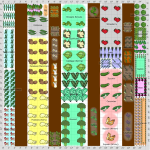
The addition of the hot house really allowed us to maximize our usage of the very spacious 600 square foot plots available at the Fairbanks Community Garden. We were obviously able to offset all our tomato, pepper and basil production, all of which take up considerable space. This allowed us to also consider an easier, less dense approach to the FCG plot where we can leverage extended row gardening and truly optimize our planting a lot more than our previous plan called for. We were originally considering a second plot at FCG and we may still consider this. If we can secure one, we can populate it with cheap potatoes, onions or any other direct sow plants quite easily. Basically we’ll plant anything that is can be direct sowed, is good for storage or preservation techniques but we might also consider some commercial starts for something interesting.
Of particular note, we were able to expand our potato crops quite significantly, as well as a handful of other things like strawberries, beans and broccoli. This really made us happier with the plan overall as we really did want to maximize our tomato crop for canning efforts. We will likely be modifying this plan one more time once we select our actual plot as it may be beneficial for us to locate earlier harvest plants closer to wherever the entrance for each row will be located.
May is going to be a busy month! We’ll be phasing into our outdoor transplanting here in early May, where the middle and latter parts of May will be spent preparing our gardens and also doing the mandatory community garden services required of us. We’re picking up our strawberries, seed potatoes, seed onions and also preparing a list of commercial starts we’ll need to supplement our failed germination efforts this year. We’re looking forward to enjoying the month getting dirty and ramping things up for what will hopefully be a great 2016 garden!
Our germination efforts have been coming along. I was able to get pictures of our current setup on our last watering, so these will be posted below. This year we’re really trying to focus on documenting each plant’s unique characteristics and have all ready devised an even better germination plan for next year. We really want to get to a place where each unique plant can see minimal transplantation prior to planting in the garden and these in-progress pictures are invaluable for next year’s plan! We also want to avoid things like where our squash is towering over other nearby plants, potentially shading them out. We’ll be putting together a blog post about all this sometime this year, mainly so we can remember what we wanted to do next year!
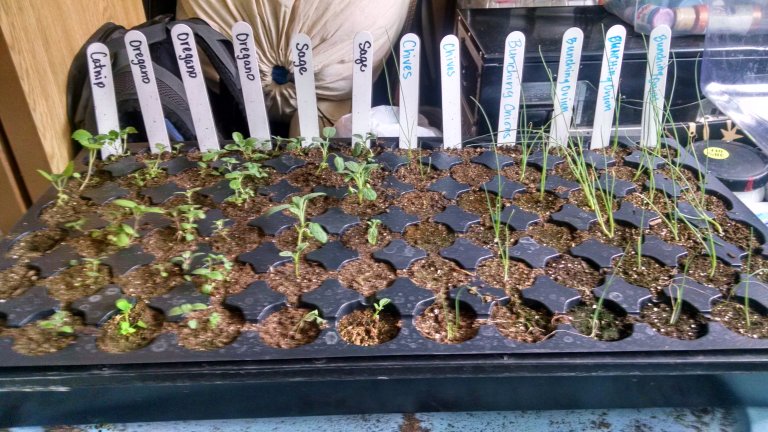
Catnip, oregano, sage, chives, bunching onions. Overall, a pretty good tray, but we could have seen better germination on the catnip and chives.

Buttercrunch and romaine lettuce, cauliflower, tomatoes, broccoli and ground cherries. This is a really healthy looking tray! We have since thinned out what turned out to be a very healthy germination!
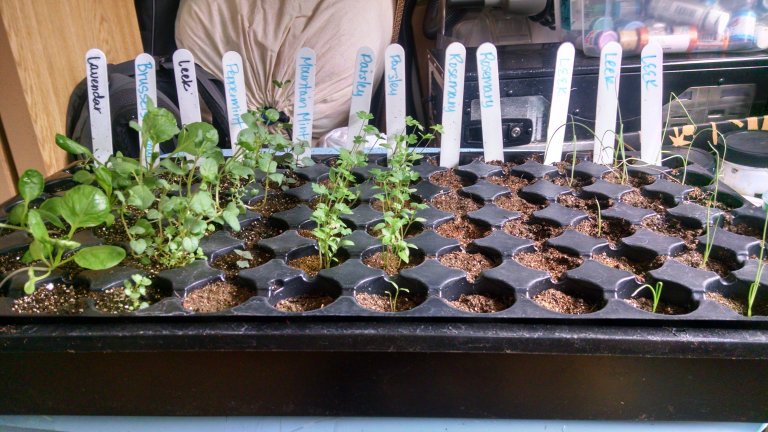
Lavender, brussels sprouts, leeks, mountain and peppermint, parsley, rosemary and leeks. Our rosemary seeds are clearly no longer viable as we didn’t see one germinate. Rosemary is always hard and apparently our seeds just weren’t going to work out. Commercial starts solve that problem!

